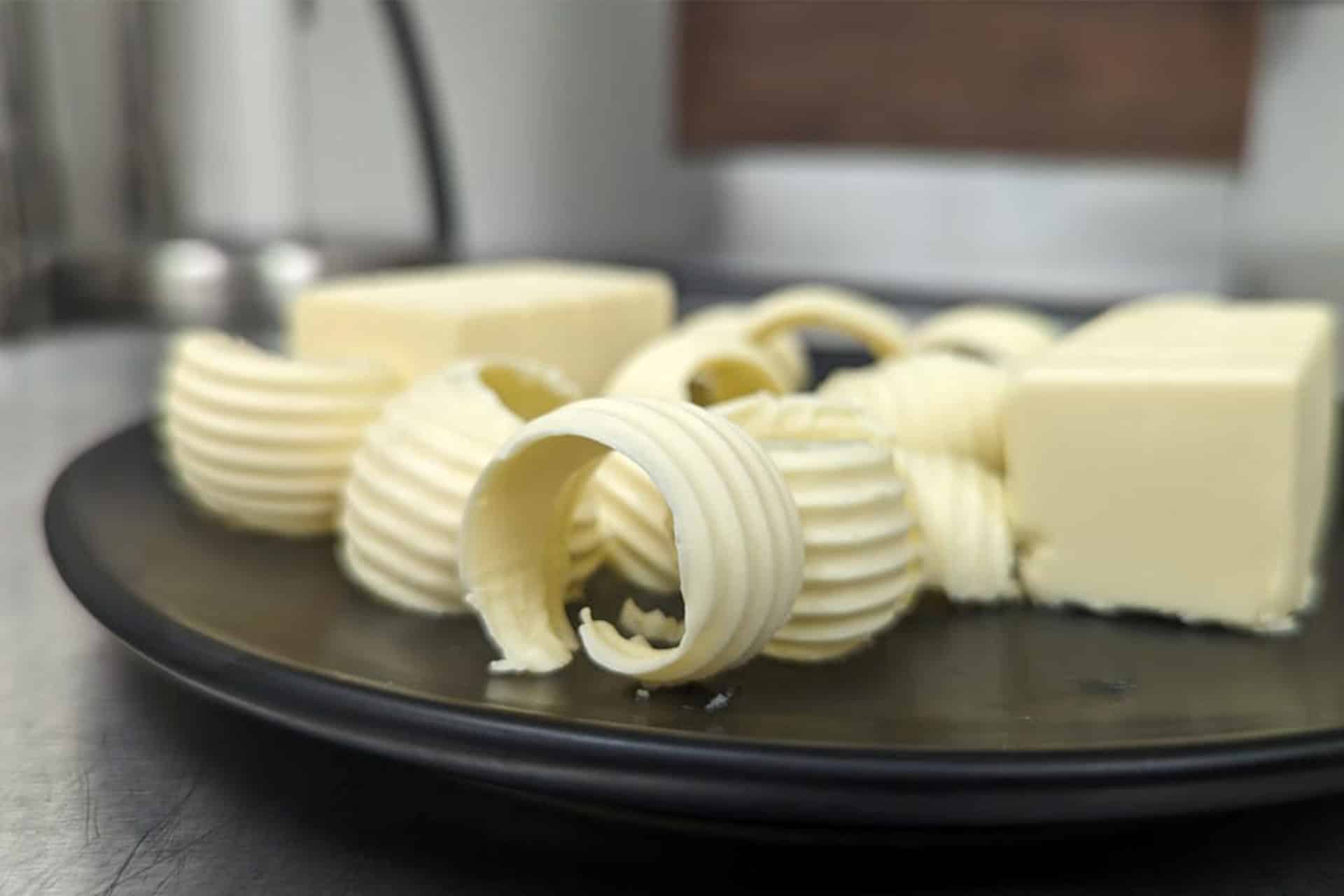- cross-posted to:
- vegan
- cross-posted to:
- vegan
A California-based startup called Savor has figured out a unique way to make a butter alternative that doesn’t involve livestock, plants, or even displacing land. Their butter is produced from synthetic fat made using carbon dioxide and hydrogen, and the best part is —- it tastes just like regular butter.



The problem with making carbon into butter is it will just be released once someone eats it and burns off the calories. BUT, I think you can make soap from just about any oil. So you could turn carbon from the air into fake butter, turn that fake butter into soap, and then store the soap in caves, solving any potential soap shortages for the next several millennia while also solving the climate crisis.
Butter is already made from carbon. They’re creating the same hydrocarbon chains that are in the fatty acids that butter is comprised of, just without the cow.
Also, for anyone who thinks that carbon bound up in fatty acid chains in butter is released back into the atmosphere through metabolism, I will direct your attention to the population US Midwest and Great Plains. These people have been proving that you can effectively sequester butter for many decades.
To be honest, people probably cause more environmental damage from releasing methane after eating butter. Lol
Luckily methane, while a potent greenhouse gas, breaks down in the atmosphere quickly. It does break down into CO2 and water, so the question quickly becomes: “are the farts of Midwesterners more potent than the amount of CO2 taken out of the atmosphere by making butter?”
My quick guess is luckily, no, they are not. Some amount of the butter will be stored in fatty tissues which will be sequestered 6 feet underground in a cement box eventually. Most will be shat in liquid or semi-solid form into a toilet to be processed by waste management. As long as they are responsible and compost it into nitrate rich fertilizer we should stay very comfortably ahead of the FBI (Fart to Butter Index).
There’s nothing good about methane release. It’s 80 times more potent than carbon dioxide as a greenhouse gas. After ~12 years, it breaks down into CO2 and water, both of which continue to contribute to the problem, since water vapor has no easy way to return to Earth once in the upper atmosphere.
Human farts are not a concern, but cow farts are a huge contributor to climate change.
I definitely understand that. My commentary is mostly satire based in fact. Hence the FBI at the end.
I figured, but the first part concerned me. There are a lot of non-scientific comments on this post in a science community. I was being overly analytical. Sorry about that.
No biggie. Even though it is satire, the analysis is sound. Given the amount of fatty acids that are stored in tissues in the body or expelled as “solid” waste, paired with the offset of dairy cows, so long as the waste is managed properly and not just left to aerobic decomposition, there should be able to be well in excess of 80x the volume if CO2 removed from the atmosphere as there is methane/CO2 released post-consumption. As long as whatever mega food conglomerate who starts making it uses atmospheric CO2 and doesn’t burn limestone to obtain concentrated quantities quickly.